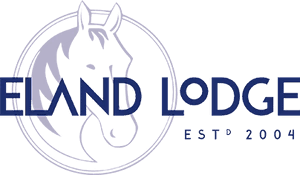What is a Dressage Judge Looking For?
Ever wondered what a dressage judge is looking for and how a dressage test is marked?
A dressage judge is looking for perfect harmony between the horse and rider. Dressage shows off the horse’s natural athleticism and balance. It is no longer just about completing the dressage movements for the test but the way the horse is going. Does it have rhythm, suppleness, contact, impulsion, straightness and collection?
The most tried and tested measure of the way of going is the German Scales of Training:
- Rhythm
- Suppleness
- Contact
- Impulsion
- Straightness
- Ultimately Collection
Riders, instructors and judges use the Scales of Training to develop a horse through its dressage career. Starting with rhythm and moving on to suppleness, then contact. It is beneficial for the horse to progress through the Scales of Training in order, as it is difficult to jump from rhythm to impulsion without having suppleness and contact mastered. Of course there are different requirements within the Scales or Training for a horse schooling at Prelim compared to Advanced.
Judges will use the Scale of Training to judge every dressage test, whether it is an Intro or a Grand Prix test. They will mark depending on the level of the dressage test they are judging.
The judge will be looking for the following:
Regular rhythm that is correct for each pace. With the correct footfalls, tempo and speed. The horse should not be rushing or look laboured within the pace.
The horse should be relaxed and be active from behind. If they are supple and swinging through their back, they will have a consistent contact, round frame and are in an uphill balance. If they are tense, although they may well be moving forward, their back will not swing and consistent contact may be lacking. The horse may also resist the rider’s aids.
When a horse moves it should be straight and on one track (unless completing lateral work), with a uniform bend through the horse’s body around a circle or on a turn. The horse should be balanced throughout the transitions, both upwards and downward transitions.
There are many qualities of a good dressage judge they include being fair and impartial, the comments and marks should reflect the dressage test and provide useful pointers on how to improve the combinations marks in the future. They should also be friendly and approachable, we all make mistakes and it is beneficial to all, if they can assist so that the rider can get back on track with the test in hand.
Dressage tests are marked out of 10 for each numbered movement and collective marks are given. Half marks may also be given. Each movement is marked on the scale of marks* and are applied as follows:
0 = Not Executed
1 = Very Bad
2 = Bad
3 = Fairly Bad
4 = Insufficient
5 = Sufficient
6 = Satisfactory
7 = Fairly Good
8 = Good
9 = Very Good
10 = Excellent
Each numbered movement is given a mark. For example with a Prelim test, the movement may be a 20m circle at C. If this is accurately ridden and executed to a good standard then an 8 will be awarded. If the horse shows resistance, bucking and the circle too small or too large they may be awarded a 3 or 4. The marks will be awarded relative to the level of the dressage test being ridden. Even though all the dressage judges have the same training from British Dressage, discrepancies can occur, between what the rider thinks is good and the judge can think as fairly good. However, the judge’s decision is final.
At the end of the dressage test the marks are added together and any penalty marks are deducted. The rider is then awarded a percentage score for the test. If two riders have the same percentage, the rider with the higher collective marks will be awarded the higher place. If the collective marks are the same, then equal placing will be given.
The collectives are awarded for:
- Paces
- Impulsion
- Submission
- Rider
The dressage judge uses the same scale of marks to award the collectives. The collectives are a summary of the dressage test performed.
When the dressage judge has approved the dressage tests, the rider can collect their score sheet. If the rider is taking part in two dressage tests during the competition, which are judged by the same judge, the rider must not collect their first dressage test until after they have completed their second dressage test.
Dressage at Eland Lodge
Why not have a go at a dressage test from Intro to Advanced Medium at Eland Lodge. We run a number of affiliated and unaffiliated dressage tests from the start of March until the end of November, on an Andrews Bowen all weather surface.
*British Dressage Members’ Handbook


